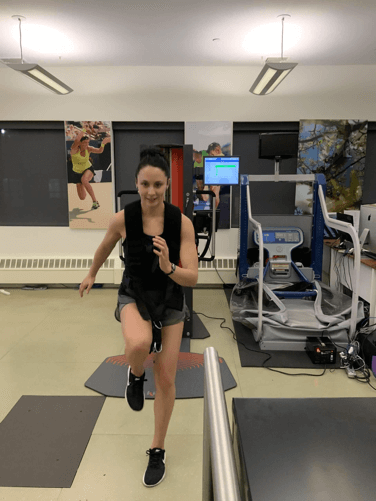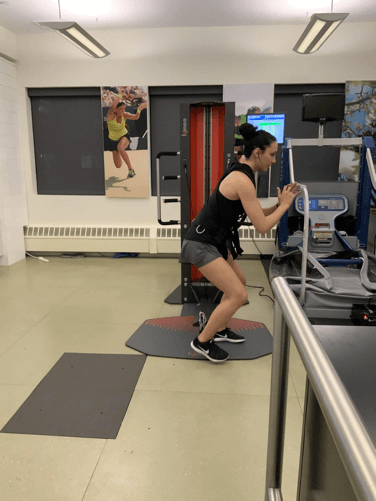During the past decade, physicians have made considerable advances in treating serious running injuries. They continue to develop new treatment methods and therapeutic exercises. Today, doctors can successfully address various injuries that previously forced people to stop running. The 3 most common injuries a runner can experience are patellar tendonitis, Achilles tendonitis, and plantar fasciitis. 82% of runners get injured at some point in their career. This statistic is a major driving force for clinicians to find a sustainable and effective solution in order to reduce that % of runners-based injuries.
Although many runners benefit from the latest treatments, these remedies aren’t equally effective. Some physicians promote questionable solutions that yield inconsistent or mediocre results. While a few studies may support these therapies, they’re often too small or imprecise. Scientists need to perform multiple comprehensive trials to confirm the efficacy of a treatment.
Doctors have extensively tested an intriguing new treatment called extracorporeal shockwave therapy (ESWT). It benefits from the same powerful ultrasonic technology that physicians use to banish kidney stones and treat calcific tendonitis. Shockwaves eliminate tough calcium fragments before they turn into kidney stones.
As ESWT research continued to progress, clinicians realized that the ultrasonic shockwaves that ESWT emits can also help heal muscle tissue & tendon injuries. Most muscle tissue and tendon damage seen today (i.e. plantar fasciitis, Achilles tendonitis, etc.) can be attributed to the fact that the body’s natural healing process stops functioning.
Through the application of its ultrasonic shockwaves, ESWT aids in both driving more blood flow into the affected site and re-starting the body’s natural healing process. In theory, these ultrasonic shockwaves act as a stressor to the patient’s injured site, which in turn “wakes” the body’s healing process back up. This effectively helps reduce the symptoms related to any type of muscle tissue and/or tendon syndrome.
ESWT is a noninvasive treatment that generates soundwaves. First, a gel is applied to the injured site and then a handheld applicator device is applied to the injured area. Next, a pulse like effect is felt on the injured site, which as a result, stimulates the cells in the area & rapidly increases blood circulation. This triggers the body’s natural self-healing process, thus allowing damaged tissues to re-generate and grow back healthy.
More recent trials have confirmed ESWT’s ability to treat at least two conditions. Dutch researchers praised the therapy’s effectiveness in 2008. They determined that it helped three out of four patellar tendonitis patients and didn’t appear to cause any side effects.
- Low-risk treatment option
- Ideal energy level is unknown
- Benefits most patients
This therapy seems to offer a less promising solution for runners with Achilles tendonitis. Some studies suggest that it can successfully treat the condition. However, other trials found it no better than a placebo. Physicians have yet to agree on optimal treatment techniques.
- Poor results in most studies
- More research is still needed
- Doctors haven’t ruled it out
Medical researchers have discovered that ESWT treats plantar fasciitis far more successfully. Physicians arranged a large-scale trial in 2006. It involved patients who had long-term injuries that doctors failed to treat with conventional methods. Different people underwent fake or authentic shockwave treatments.
Researchers monitored the patients’ pain levels for about 90 days. They found that people experienced considerably less discomfort if doctors had provided them with genuine treatments. Unlike other remedies, ESWT didn’t trigger any side effects or complications. No participants suffered ill effects within 12 months.
To sum it up, medical research generally supports ESWT as a desirable remedy for plantar fasciitis and patellar tendonitis. Its ability to treat Achilles tendonitis remains in doubt. While it won’t benefit everyone, this therapy doesn’t seem to cause any negative effects. ESWT is not the end all be all of runner associated treatments. Also, because of its infancy as a treatment plan, ESWT has proven to be a safe and effective treatment for runner’s associated injuries.
People with running injuries should consider shockwave therapy if conventional remedies don’t yield the desired results. Some physicians use different treatment techniques or energy levels than others. It’s important to choose an experienced, reputable doctor who has successfully treated fellow patients. Our clinicians at NYDNR have 1st hand experience with providing ESWT treatment to patients. If you are experiencing patellar tendonitis, Achilles tendonitis, or plantar tendonitis and are considering ESWT as a treatment option call our office for a consultation. Our team believes in providing patients a fully dynamic rehabilitation program and using the most efficient and effective modalities in order to eradicate the problem.

































































